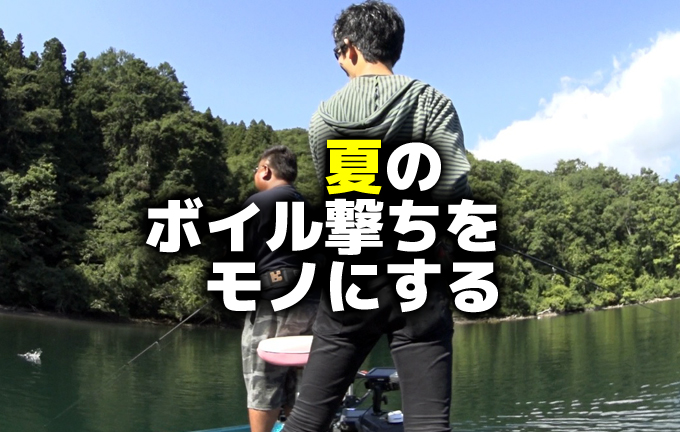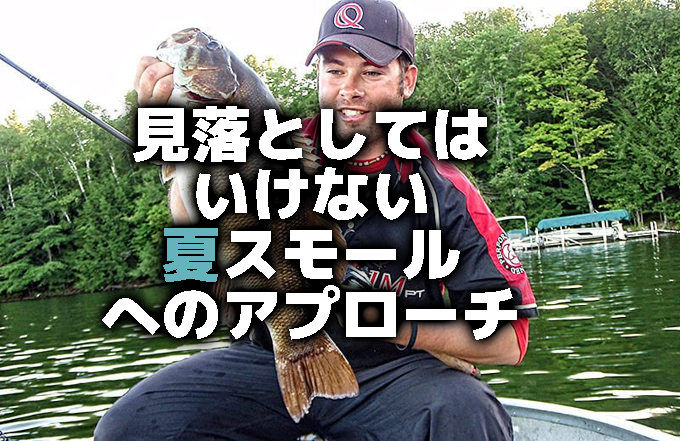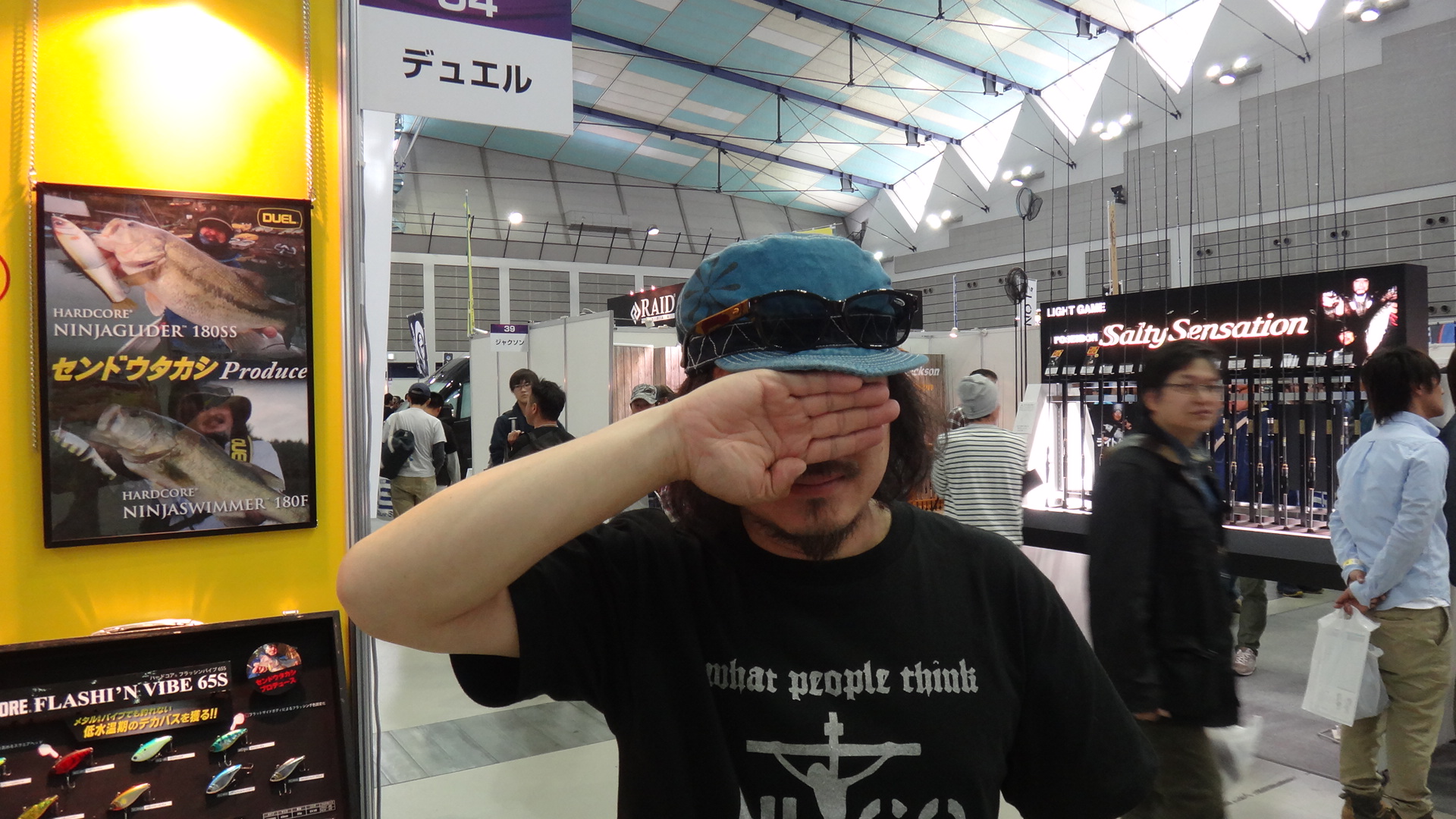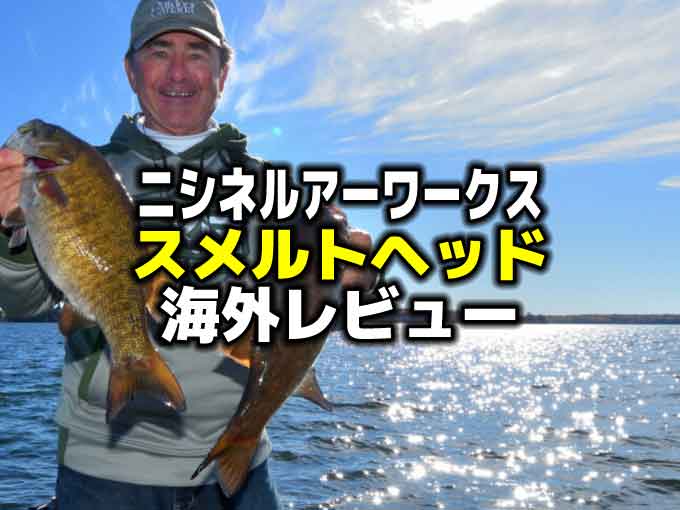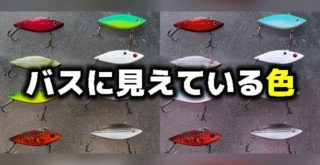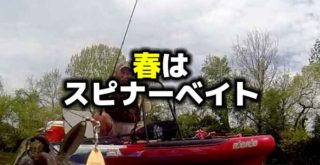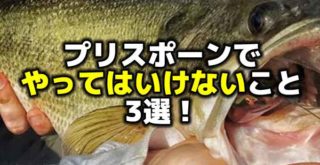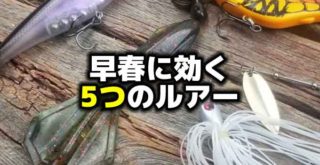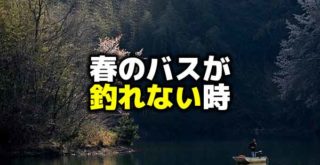ディープのバスの居場所を突き止める
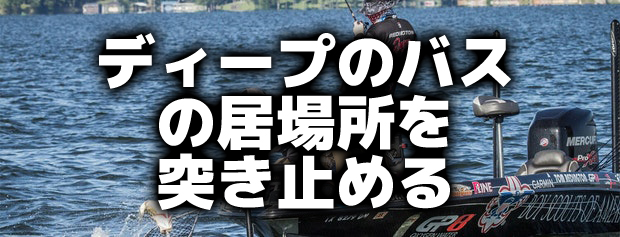
Photo by scout.com
こんにちは!店長の小山です!
本日は海外サイトより、”3 Ways to Zone In on Deep Bass”という記事を引用してご紹介いたします。
引用先:scout.com”3 Ways to Zone In on Deep Bass” By LUKE STONER 6/29/2017(海外サイトです)
ディープのバス釣り。マニアック、という意味ではなく、文字通り深場でのバス釣りのことですね(笑)
マイボートでも、レンタルボートでも、ボートでバス釣りをするときに絶対に気にしなくてはいけないことのひとつに、「水深」があると思います。
スポーニング時期など、シャローに集中していれば、魚探を見なくても釣りが成立するシーズンは確かにあるのですが、ボートを浮かべる前の情報収集で敏感になることとして水深はあるのではないでしょうか。レンタルボート屋さんの釣果情報にも水深は必ず記入されていますしね。
そうです。ご存知の通り、ディープエリアには「バスのいる水深」というものがあります。
例えばフラットエリアは斜面がなだらかなため、水深が1メートル違うとした場合、深さは1メートルしか違わないのに、岸からの距離は数メートルも離れてしまうということになります。ですので正解のレンジと1メートルもズレてしまうと、バスが全くいない場合がありますよね。
そしてその正解の深さがわからない時は、結果的に1日を無駄に漂流してしまうことになり、結局はボウズ逃れで岸近くの小バスを相手にするしかなくなってしまうのは私だけではないはずです(笑)
この記事は、アメリカFLWのツアープロ、トム・レディントン氏により、その日の正解の深さを見つける方法などを解説しています。ディープ攻略をモノにしたいという方は読んでみてはいかがでしょうか。
「正しい深さ」に集中すること
As bass move offshore, Redington believes there is an optimal depth range in every section of every fishery. This ideal depth is different for every lake and changes as bass migrate. Redington has used this phenomenon to his favor in his career, racking up several high finishes in offshore–dominated tournaments by understanding the ‘right’ depth.
“The real advantage of this concept is that it makes an angler’s search easier,” Redington said. “Once I find what I feel is the ideal depth range, whether it’s in 8 feet deep or 28 feet, I can look at a lake map and specifically focus on areas in this opportune depth. Offshore fishing can be overwhelming, but this method really allows me to zone in on structure in the depths I am confident bass are using. “
He first learned the nuances of finding the right depth during his time guiding on Lake Fork. Redington would notice schools of bass holding consistently to specific depths for a few days, only to find they moved deeper the next week. It wasn’t only one school of bass that would move deeper, though. Instead it seemed all the schools of bass in one section of a fishery would move somewhat in unison.
“This logic helped me notch another Top 10 in an FLW Costa Series event on Kentucky Lake last month,” Redington said. “On the final day of practice I found the bass were out deeper than I normally find them—26 to 29 feet seemed to be the key depth. After I figured that out, anywhere I found a creek channel junction, hump or a ditch at that depth had a good chance of having some bass on it. And by only focusing on those depth zones, I was able to find several schools of bass with less than a full practice day.”
Redington runs Garmin electronics and uses their Depth Shading mapping feature to make his search even easier. Depth Shading was important in helping Redington throughout the FLW Tour season and directly contributed to his recent Top 10.
“Garmin Depth Shading helped me tremendously,” Redington said. “I used 3-foot contours on my color shading and made the 26 to 29-foot zone yellow so it really jumped out at me. Illuminating several spots I ended up catching fishing in the tournament on that I had never even graphed, let alone fished. Contours with 1-foot intervals are extremely helpful in many situations, but they get kind of busy out deep on a complex lake. By making 3-foot contour intervals and changing the color patterns it made finding the spots kind of easy.”
バスが沖合に移動したとき、レディントンはすべてのフィールドの各エリアに最適な深さの範囲があると考えています。この理想的な深さは湖により異なり、またバスの移動に伴って変化します。レディントンは、この現象を彼のキャリアに活かし、「正しい」深さを理解することで、オフショアがカギとなったトーナメントで高成績を収めました。
「このコンセプトの最大の利点は、釣り人がいい場所を見つけるのを容易にすることだ」とレディントン氏は語った。 「深さ2.4メートルか8.4メートルかにかかわらず、理想的な深さの範囲が見つかったら、湖の地図を見て、この適切な深さのエリアに集中することができます。オフショアの釣りは圧倒されてしまうかもしれませんが、この方法はバスがいると確信する深さのストラクチャーだけに入ることを可能にします。」
彼はまず、フォーク湖でのガイド期間中に正しい深さを見つけることの重要性を学びました。レディントンは数日間、特定の深さにずっとバスの群れがいることに気付きましたが、次の週にはもっと深くへ移動したことに気付くだけでした。しかし、より深くへ移動したのは1つのバスの群れだけではなかったのです。どうやら、そのフィールドの1つのエリアで全てのバスの群れが一斉に動いたようでした。
「この論理は、先月のケンタッキー湖のFLWコスタ・シリーズでトップ10入りを果たすのに役立った」とレディントンは語った。 「プラクティスの最後の日には、バスは私が以前に見つけたよりも深く、26から29フィートが深さのキーとなるようでした。私がそれを理解した後、あらゆるリバーチャンネルの接合部、ハンプや溝をディープで見つけられたところでは、多くのバスがいる可能性がありました。そして、そのディープゾーンだけに焦点を当てることで、プラクティス期間より少ない日数で多くのバスの群れを見つけることができました。」
レディントン氏はガーミンの魚探を使用し、デプスシェーディングマッピング機能によってサーチをさらに容易にします。デプスシェーディングは、FLWツアーシーズン中にレディントンを支える上で重要で、最近のトップ10入りに直接貢献しました。
「ガーミンのデプスシェーディングは私を助けてくれました」とレディントンは言いました。 「私は1mの等深線の帯を色分けして使用し、8~9メートルゾーンを黄色にして見やすくしました。いくつかのエリアをそれによって明らかにし、今までトーナメントで魚探掛けさえしなかったところでも釣り上げることができました。 30センチ間隔の精密な等深線は、多くの状況で非常に役立ちますが、ディープが複雑な湖ではかえって面倒な一日を過ごすことになります。 1メートルの等深線の間隔にして、カラーパターンを変えることで、そのスポットを簡単に考えることができました。」
素早く「正しい深さ」を見つける
Redington’s number one shortcut to find a key depth during an offshore tournament is quick, easy and can be practiced with anything from 2-D sonar to today’s modern electronics.
“The first thing I’ll do is graph a deep point or ledge that falls off into very deep water,” Redington said. “Whether it’s Lake Fork, Kentucky Lake or Table Rock, you’ll be able to see a distinct line at a certain depth where both fish and baitfish seem to be suspending. This line is usually unmistakable and for whatever reason, fish don’t want to go deeper than this specific depth zone. Where I find this line is exactly where I start my search in an offshore tournament.
“If I see baitfish and predatory fish consistently suspending in 28 feet of water, I’m going to graph structure from 25 to 28 feet deep. It’s important to understand this depth won’t be the same for an entire lake. Especially on a body of water with a clear, stable lower end and a shallow, riverine upper end for example. There will still be ideal depths in the different areas of a lake, but they’ll be different and specific to the section of the lake you find yourself in.”
Redington suggests this phenomenon occurs throughout the year but is something he uses to his advantage when bass go to their deepest haunts during the summer and winter months. Even though this shortcut has helped him cash numerous checks, Redington admits he doesn’t understand exactly why fish strictly relate to these ideal depths throughout different times of the year.
“Who knows why exactly the fish do it,” Redington joked. “Biologically they may be relating to thermocline or light penetration, or it could be water temperature or dissolved oxygen. Something definitely is a driving factor, because the consistency is there, but I won’t pretend I know exactly why. As an angler, it really doesn’t matter what they are relating to as long as I understand it happens and do my best to take advantage of it.”
トーナメントで沖の重要な深さを見つけるためのレディントンの手っ取り早い方法は、すばやく簡単で、2D魚探から今日の最新の魚探まで何でも練習できます。
「私がやる最初のことは、非常に深いディープゾーンに落ちる岬や棚を魚探に表示させます」とレディントンは言いました。「レイクフォーク、ケンタッキーレイク、テーブルロックのいずれであっても、魚とベイトフィッシュの両方がサスペンドするような水深の明確なボーダーラインを見つけるのです。このラインは通常は変わることなく、どんな理由であれ、魚はこの特定の深度ゾーンより深く行きたいとは思いません。私がこのラインを見つけたのは、私がオフショアトーナメントでサーチを始めたころです。」
「ベイトフィッシュとバスが一貫して水深8.5メートルに浮いているのを見たら、7.5〜8.5メートルの深さを(色分けして)表示させるのです。しかしこのレンジは湖全体で同じではないことを理解することが重要です。特に、ボディウォーターがクリアで、シャローまで低い水温で安定している場所や、川筋の最上流部などです。湖のさまざまなエリアに理想的な水深があり、自分が見つけた湖のエリアとはまた異なります。」
レディントンは、この現象が一年を通して起こると示唆していますが、夏と冬にバスが最も深いところへ行くときに、彼の優位性が発揮されます。この方法は彼が数多くの賞金を得るのに役立っていましたが、レディントンはなぜ、魚がなぜこれらの理想的な水深に密接に関係しているのかをこれまでに正確には理解していないと認めています。
「なぜその魚が正確にそこにいるのかなんて、誰がわかるんだい」とレディントンは冗談ぽく言いました。生物学的には、それらはサーモクラインまたは日光の届き方に関連しているとか、水温または溶存酸素である可能性があるとされています。一貫性がある行動なので、何かが間違いなく原因になっているのでしょうが、私はその理由を知っているふりはしません。釣り人として、私はそれが起こることを理解し、それを活用するために最善を尽くすだけであり、彼らが関係しているものは本当の問題ではないのです。」
さらに絞っていく
Once Redington feels he has zoned in on the opportune depth range the baitfish, bass and other predatory fish are using he employs another shortcut to refine his search for likely spots.
“I’ll look at my electronics and find structure with the most surface area in the optimal depth,” Redington said. “Whether it’s 12 feet or 30 feet, I’ll look for points, humps, channels or ledges with a lot of surface area in that depth zone. This narrows down my search to areas I believe have the highest percentage of holding large schools of fish.”
The method of finding spots with a significant amount of surface area in the key depth zone gives Redington the highest probability of finding bass in his allotted practice time.Redington admits this method might not necessarily find you a sneaky, magic spot that no angler has ever fished before, but this simple two-step system offers insight to novice offshore fisherman and can help an angler quickly find schools of bass off the bank.
ベイトフィッシュやバスがいる適切な水深の範囲がゾーン分けできたとレディントンが感じたら、次は別の方法を使って、可能性の高いスポットを探していきます。
「私は魚探を見て、最適なその深度で最も表面積の大きい地形変化を見つけます」とレディントン氏は言います。 「そこが3.6メートルとか9メートルとかに関わらず、その深さのゾーンに多くの表面積を持つ岬、ハンプ、溝、棚を探します。 これは、私が魚の大規模な群れを持っている割合が最も高いと思うスポットへ絞り込んでいく行為です。」
この方法でキーとなる深度ゾーンで多くの量の表面積を持つスポットを見つければ、限られたプラクティス期間にバスを見つける可能性が最も高いのです。
レディントン氏は、この方法では、必ずしも以前から釣り人がこそこそ釣っていたような秘密の場所を見つけることはできないかもしれないと認めていますが、この単純な2段階システムは初心者の釣り人でも洞察力をつけ、バンクを離れ沖のバスを見つけるのに役立つだろうと言っています。
いかがでしたか。
まずは湖の最深部に隣接する地形変化を探して、深い方から浅い方へずーっと魚探を掛けて(逆でもOK)、ベイトとバスがサスペンドしているラインを見つける。
その水深が例えば9メートルだったら、湖のあらゆる場所の9メートルにある地形変化が怪しいと見る。
そして魚探の9メートルラインの色を変えてみると、地形変化を見つけやすいと、こういうワケですね。
そんな魚探がないんですけどね(笑)
そしてその水深のなかでも、表面積の大きいところを探す、表面積が大きいということは、同じ水深でもつるっとしたボトムじゃなくて、なるべくデコボコしたボトムということですね。
これをするには、やはりある程度その湖に詳しくないとできないことだと思います。
でも、それこそがバス釣りのなかでも成長する部分のひとつで、楽しさでもありますよね。
同じフィールドに通いこんで見えてくることを攻略するわけですから、たまりません。
高価な魚探を買い揃えるということではなくて、考え方として、取り入れていけばいいと思います。
ディープの攻略、もっと上手くなりたいです(笑)
それでは、また。
毎度ありがとうございます!





